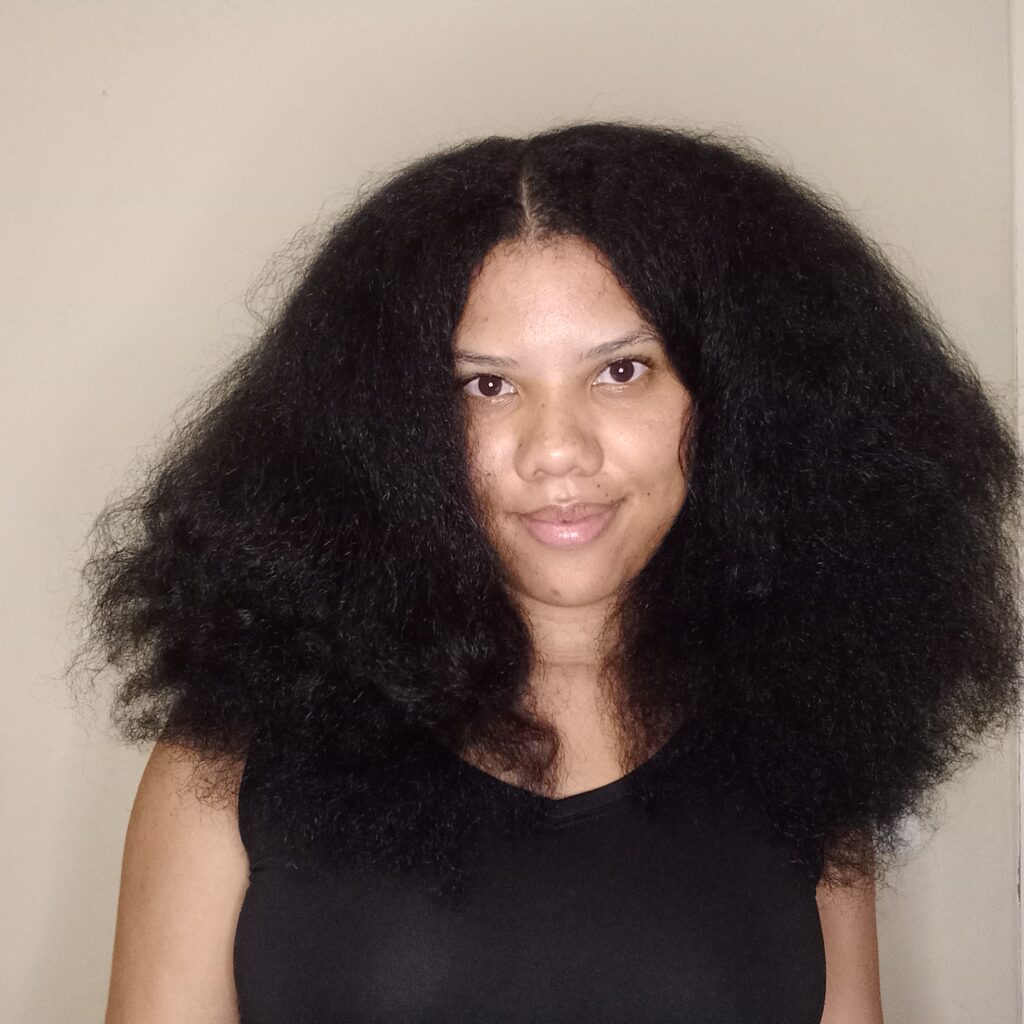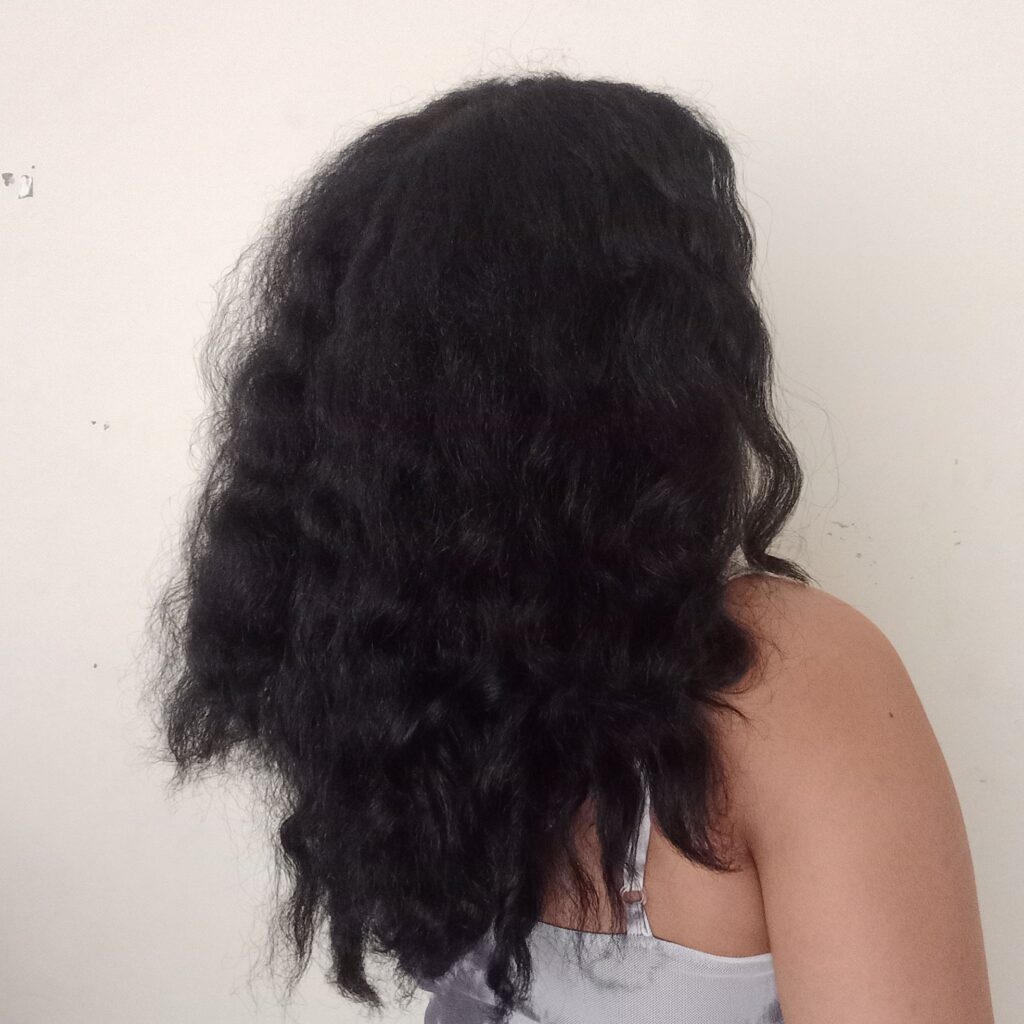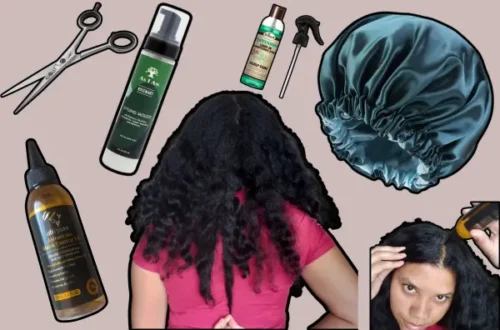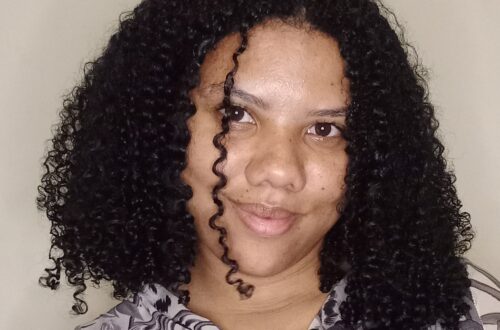Tips On How To Grow Your Low Porosity Natural Hair Fast

Hair porosity is surely a term you’ve heard being thrown around in the curly and natural hair community.
Porosity type is a great factor to consider when planning your hair care routine. From choosing the right products to the best method for moisturizing your hair. The hair’s porosity level matters.
When it comes to growing out your hair or trying to retain length, your hair type matters just as much. Because, when you know how to best care for your hair, you retain length. And when you retain length, your hair gets longer and you begin to see that growth you’re looking for.
Hair porosity refers to the hair’s ability to absorb moisture as well as moisture retention capabilities of the hair. There are 3 types of hair porosity levels namely, low-porosity hair, high-porosity hair, and medium porosity hair.
In this article, we’re gonna talk about low porosity hair growth and how to best care for all the new hair you’ll be having.
What Is Low-Porosity Hair?
As mentioned, porosity is how easily moisture can penetrate the hair through your hair shaft. This is determined by your genetics but can be altered by other factors like heat and chemicals.
When you have low hair porosity, this means that your hair struggles to absorb moisture as well as retain this moisture, making it very dry hair.
This is because your hair cuticles are tightly packed together and struggle to open up to allow moisture into the hair.
A great thing about low-porosity hair is its moisture retention ability. When you have a solid hair care regimen and you get moisture into the hair cuticle, it has just as hard a time leaving the hair as it does entering the hair. So you have the potential to lock in moisture better than other porosity types.
The Characteristics Of Low-Porosity Hair:
- Dry ends: Because your hair struggles to absorb moisture, this leads to your ends (the oldest and dryest part of your hair) being dry and prone to breakage and tangling.
- Difficulty absorbing products: Because absorbing products is difficult for those with low porosity hair, hair care products also struggle to penetrate the hair. When applying the product, you may find that it sits on top of the hair for hours rather than sinking in.
- Prone to product buildup: When the products aren’t absorbed by the hair, they end up sitting on the scalp and hair follicles, causing product buildup. This means you have to clarify your hair more often than other hair types.
- Loss of curl definition: When hair is dry, it’s harder for the curls to stay defined. So the curls for people with low-porosity hair fall more easily than those with high porosity hair.
- Little to no elasticity: Low-porosity hair is prone to breakage because it has almost no elasticity, so when it is tugged at, it can easily snap rather than bounce back.
- Wash days take forever: First, you struggle to get your hair wet, then you struggle to get product absorbed into your hair, then you wait forever to dry your hair. Low-porosity hair tends to cause wash days to last much longer than other hair porosity levels.
- Hair takes longer to dry: Because the hair cuticle is shut so tight, once you get your hair wet, it takes much longer to dry.
Hair Porosity Test:
The easiest way to do a hair porosity test is with some clean hair and a glass of water. Your hair has to be clean for this test, do not do this on dirty hair as it will sway the results.
Take your clean, product free strand of hair and place it in a cup. If your hair floats at the top, it is low-porosity hair. If it stays in the middle it is normal/medium porosity hair and if it sinks to the bottom it is high porosity hair.

How To Care For Low Porosity Hair
Having low-porosity hair can be frustrating, especially because it won’t let moisture in and your hair needs moisture to thrive. But, with a few of these low porosity hair care tips, you will have your hair looking and feeling more moisturized and alive.
Although you’ll have to work a little harder than most hair types, it will be well worth it once you start to see that length retention.
You can mix and match these tips and find what best works for you because your hair has a mind of its own, not all these tips will work for you. An important part of taking care of your hair is knowing how to listen to your hair.
1. Clarify Your Hair:
Clarifying your hair is the process of cleaning out product buildup from your hair follicle as well as your scalp.
Product buildup clogs up your hair follicle prevents hair growth and may even cause hair loss.
Because low-porosity hair is prone to product buildup, it is important to regularly clarify your hair. I recommend clarifying your hair every wash day (every 1-2 weeks), with a good clarifying shampoo.
- An Easy Guide For A Natural Hair Wash Day Routine
- Rice Water Rinse Recipe & Routine For Natural Curly Hair
2. Deep Condition With Heat:
Heat is a great way to open up your hair’s cuticle, which is especially important for low hair porosity. When doing a deep conditioning treatment it is best to use heat to allow your hair to reap the full benefits of the deep conditioner.
When clarifying your hair, make sure to use warm water to open up the pores, then while the pores are still open, apply your deep conditioner to the hair.
Cover your hair with a shower cap and then your bonnet to trap the heat from your scalp and then, sit under a hooded dryer if you can.
Alternatively, you can run a blow dryer over your hair (while it is in the bonnet) if you do not own a hooded dryer.
Allow the deep conditioner to sit for 30 minutes to an hour.
Do a deep conditioning treatment at least twice a month, I do them every wash day.
- Moisturizing Vs Sealing Oils, What’s Best For Natural Hair
- Do You Need To Oil Your Scalp? How To Harness The Full Power Of Oiling Your Scalp!
3. Use Humectants On Your Hair:
Humectants love water molecules, so using them in your low-porosity hair is a must. Honey, aloe vera, flax seed gel, and glycerin are all great humectants.
These humectants have moisturizing ingredients that create a clear, penetrateble film around your hair strands to lock in moisture.
Humectants draw moisture from their’ surroundings to keep’ the environment moisturized. This is a great way for low-porosity hair to retain moisture.
4. Always Pre-Poo:
Pre-pooing is the method of preparing your hair before shampooing.
Because shampoos can be harsh on our hair, it is always a smart idea to pre-poo your hair to form that protective barrier and keep the shampoo from drying out the hair.
There are many ways to pre-poo your hair, here are the Best Pre-poo Treatments For Low-Porosity Natural Hair, in that post, I share with you not only how to pre-poo your hair, but also the best pre-poo to choose based on what your hair needs.
5. Add Moisture To Your Hair As Needed:
Because your hair tends to be on the dryer side, it is always a smart idea to moisturize mid-week when your hair feels dry.
Adding that moisture back in prevents hair from breaking off.
Mid-week moisturization prevents hair from feeling brittle and snapping off. Add some aloe vera to spray bottles with some water.
Because it is a humectant it will absorb moisture from your surroundings and add it into your hair.
6. Use A Sulfate-Free Shampoo
Sulfates dry out your hair, causing hair breakage, loss, and damage. Use alcohol and sulfate-free shampoos and conditioners that contain natural ingredients like humectants and hair oil.
7. Protective Styles Are Your Best Friends:
Protective styles are the best way to retain length. Because your hair is tucked away and untouched for a period of time. From twists to braids or weaves, protective styles are great for moisture retention.
If you find it hard to commit to one style at a time, there are cute protective styles that you can use to define your curls while they dry and take them out the next day, ie; twist outs, braids outs, and Bantu knots.
8. Moisturize Properly
When moisturizing your low-porosity hair, use the LCO method.
The “L” stands for liquid, this is the hydration you are adding to your hair, which should always be water.
So after washing your hair, make sure that your hair is drenched in water.
The “C” stands for cream or leave-in conditioner, this should be added to your hair to help style and form your curls, while also helping to add more moisture to your hair.
The “O“, stands for, you guessed it, oil. This step is the step that locks all the moisture into your hair, so using one of the best oils for sealing will help you retain that moisture.
9. Use Lightweight-Water Based Products
Low porosity hair means the hair cuticle is tightly packed and doesn’t let large water molecules in.
This means a lightweight water-based product will have more of a chance to penetrate first, than your medium-weight cream product.
So choose products that have water, extracts, and milk in the top ingredients.
10. Stay Away From Silicones:
While silicones add a nice shine to your hair they are synthetic ingredients that just coat the hair. Making it hard for water to penetrate the hair.
11. Avoid Protein Treatments:
While protein is great for high-porosity hair, the same cannot be said for low-porosity hair. Low porosity hair is sensitive to too much protein. It can cause the hair to harden and be hard to manage.
When hair has too much protein, it results in protein overload, which low-porosity hair is very susceptible to. This results in stiff and fragile hair, leading to breakage.
12. Use Lightweight Oils:
Light oils are ideal for your hair type because they do not weigh down your hair. Opt for light oils like; argan oil, grapeseed oil and baobab oil. These natural oils are great for low-porosity hair.
Avoid using heavy oils like jojoba oil, olive oil, and castor oil often. I would also stay away from heavy butters like shea butter.
I do recommend using an array of both heavy oils and lightweight oils. But you should know how to best use these oils on your hair, and the best oils to use for your needs, you can read all about that here.
- Castor Vs Jojoba Oil, Which Is Best For Natural Hair Growth
- Should You Be Using Eco Gel For Styling Your Natural Hair?
13. Steam Your Hair:
Steam works great when applying product to your natural hair.
The steam opens up your hair follicle to allow the hair products to better penetrate the hair and allow the moisture to get fully absorbed.
Steam in itself also adds moisture to your hair. Because the water is in it’s gas form, the particles are more active and make their way into the hair follicle much easier than in its liquid state.
14. Protect Your Hair While You Sleep:
Once you have gotten the moisture into your hair, it is best to keep that moisture locked in.
When sleeping, wear a satin bonnet to protect your hair from friction. You can also sleep on a satin pillowcase or a silk pillowcase. This is because satin and silk don’t absorb the moisture from your hair like cotton pillowcases would.
15. Moisturize From Within:
Add moisture to your hair by adding moisture to your body. Drink plenty of water and stay hydrated, also try and eat these foods to stimulate hair growth.
16. Apply Product To Wet Hair:
When styling your hair, make sure your hair is drenched in water first. This allows you to lock that water into your hair follicle as you add product on top of it. Make sure to seal with a good sealant oil.
17. Get Trims When Needed:
Because low-porosity hair tends to have dry, more brittle ends. Make sure to get rid of these ends regularly to avoid the split ends moving up the shaft and causing breakage.
How To Grow Low-Porosity Hair

Many factors affect the rate at which your hair grows, like genetics, styling, manipulation, heat, and chemicals.
The key to hair growth is a healthy scalp so clarifying your scalp as needed is important. Ensure your hair follicles are not clogged by oils and excess product.
While you may be growing your hair, if you do not take good care of it, you will lose the hair as fast as you grow it.
So you need to focus on length retention.
The best way to retain length is to get regular trims, keep your hair moisturized and to do protective styles.
My hair was stuck at shoulder length for years and I believed I was just one of those people whose hair didn’t grow until I started doing my protective styles at home.
Now I notice that I retain length much easier than when I manipulated my hair often.
Pin For Later!








